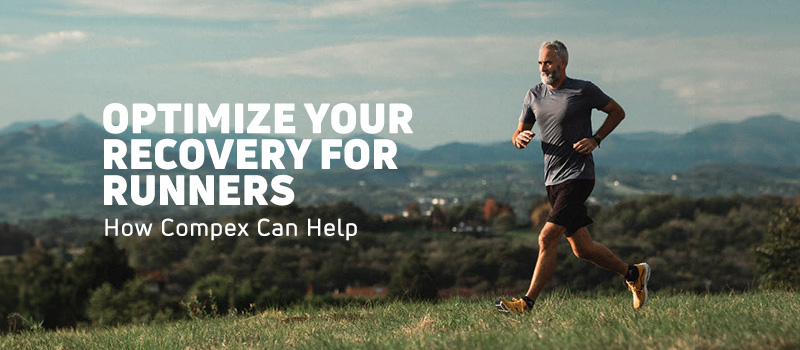3 Ways to Optimize Recovery for Runners
Written by Danielle Nederend

Effective muscle recovery is crucial for progress and to avoid overtraining and injuries. It's important in the short term to prepare you for your next training session, in the medium term to arrive in top form for your competition, and in the long term to continue enjoying your passion for many years.
Optimal recovery will allow you to get back to full strength faster after a training session and keep improving your training performance. This is known as supercompensation.
When training sessions are consecutive days without a recovery phase, or when the recovery phase is incomplete, it's referred to as overtraining, and this is when the risk of injury arises. The body becomes fatigued, hindering progress or even causing regression.
There are different methods you can use to optimize recovery that we will discuss here.
#1 BOOST MUSCLE RECOVERY VIA MASSAGE
Massage helps to relax muscles after intense training, reducing muscle tightness, stiffness, fatigue, and aches. It also plays a role in improving tendon flexibility and reducing adhesions. In terms of circulation, it promotes venous return. On the nervous system level, it has a pain relief effect through gate control (inhibiting pain message transmission and reducing perceived pain) and endorphin release. Psychologically, it reduces stress, letting you take care of yourself and relax.
Massage also stimulates blood circulation, aiding in toxin elimination, which all contribute to better muscle recovery!
For massages, there are various highly effective tools for easy, deep self-massage, such as rollers, vibrating balls, or massage guns. Our Fixx® 2.0 massage gun has five powerful intensity settings, paired with a high stall force, and will give the intense pressure needed to help relieve the toughest spots safely and comfortably.
#2 OPTIMISE RECOVERY USING COMPRESSION BOOTS
Pulsating compression from boots reduces leg fatigue and muscle pain by improving venous return, blood circulation, and accelerating reoxygenation which all optimize recovery. We recommend using compression boots for 20 to 50 minutes after intense training to reap the benefits. You should do this within 2 to 4 hours after physical activity. Our Ayre® compression boots are a therapeutic product using intermittent pneumatic compression. When exercising, the body builds up lactate level as a biproduct of muscle contraction. Compex Ayre uses a dynamic pulsing compression up the limbs in waves for the duration of its use, which helps promote quick healing.
#3 DECREASE SORENESS AND RELAX MUSCLES WITH ELECTROSTIMULATION
Electromuscle stimulation helps to optimize recovery mainly by reducing pain; it has an analgesic effect. Like massage, it triggers gate control and endorphin release. Using an electro stimulator also reduces aches and relaxes muscles passively, without any effort from you.
Using our Wireless USA device with the muscle recovery program within 3 hours after exercise will quickly remove muscle waste before it builds up. Since the goal of these programs is not to develop muscle, electrode placement can be less precise than for strength and conditioning programs. The advantage in these conditions is being able to stimulate multiple muscles or muscle groups simultaneously. For example, you can recover the muscles of the thighs and calves at the same time.
PROVEN EFFECTIVENESS
Backed by clinical studies proving their effectiveness, Compex stimulators also belong to the category of Class II medical devices.
COMPEX - ALWAYS WITH YOU
We're on the side of athletes, amateurs and ordinary people. From the search for better performance to post injury muscle recovery, from post fatigue massage to pain treatment. At Compex, we have just one goal: people's wellbeing.
Read our experts' advice on our blog, catch the latest news, product releases and promotions by subscribing to our newsletter, and watch our videos on the YouTube channel, and follow us on Facebook and Instagram to stay up to date.
The contents of this blog were independently prepared and are for informational purposes only. The opinions expressed herein are those of the author and are not necessarily indicative of the views of any other party. Individual results may vary depending on a variety of patient-specific attributes and related factors.

